Allergy is a reaction of an organism to a foreign protein. Recently, cases of allergies have become more frequent, especially in small dog breeds. They are manifested by combs on the skin, hair loss, otitis, expiration from the eyes and nose, salivation and swollen paws.
The largest percentage of allergies is caused by fleas, reactions to a component in the diet are less common, but they are. According to recent studies by European scientists on the frequency of allergies, beef and lamb, chicken, turkey, rabbit and fish are in the first place.
And if by the method of exclusion you came to the conclusion that this is still a reaction to nutrition, you need to choose a hypoallergenic diet. In almost every line of feeds there are such, consider the features of such feeds for dogs of small breeds.
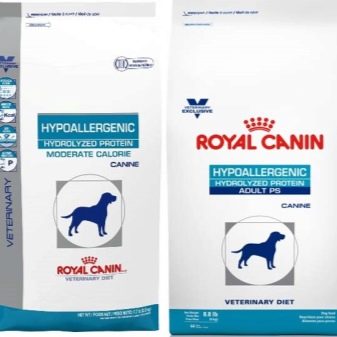
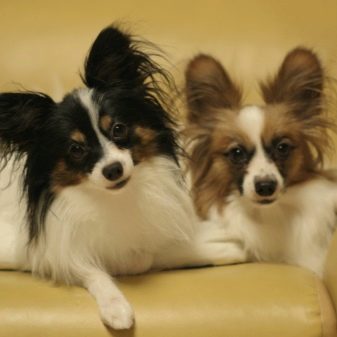
Structure
Almost every manufacturer of industrial feed in the line has feed marked “hypoallergenic”. There are preventive hypoallergenic feeds, they are premium, super-premium, holistic and medicinal - veterinary diet.
The use of such feed will not add vitamins and minerals to the diet. Use of preventive feed for animals prone to allergies is possible without restrictions.
Approximate composition:
- contains one type of meat (mono-protein) - lamb, duck, fish, often salmon;
- grainless (gluten-free) - without corn, wheat, barley;
- no exotic fruits and vegetables;
- eat minerals and vitamins in their natural form;
- additives for skin and wool (Omega-3.6);
- prebiotics (mannan oligosaccharides and fructooligosaccharides), chicory as a source of inulin as a prebiotic.
It is proved that prebiotics, in addition to the prevention of digestive disorders, also normalize the body's reactivity to foreign proteins.
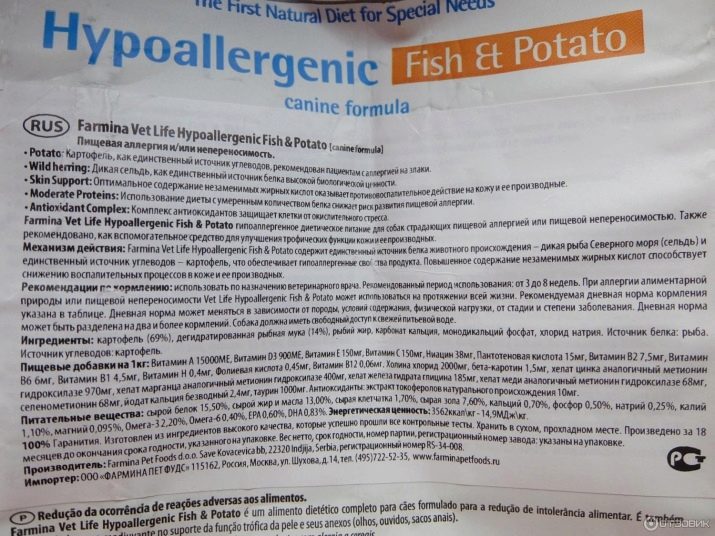
Hypoallergenic food for adult dogs of small breeds looks something like this.
For puppies, the choice of hypoallergenic food with a rare type of protein is narrower, more often on chicken or on a multi-component protein.
The veterinary diet feed contains dehydrogenated protein or hydrolyzed bird feather. The protein dehydrogenation procedure helps to preserve its beneficial properties by splitting it with enzymes into smaller particles. Such a protein has a low molecular weight structure, is absorbed better, so the receptors in the body do not give a reaction to it.
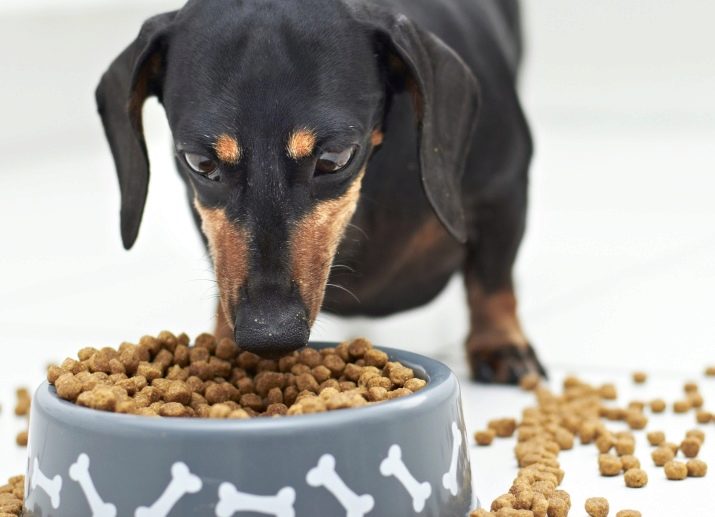
Indications and contraindications
An indication for the use of therapeutic hypoallergenic food is actually an allergic reaction. There are allergies or food intolerances in different ways:
- itching, scratching, eczema;
- otitis media;
- disturbances in the digestive tract;
- efflux from the eyes, nose, and increased salivation;
- swollen limbs (less commonly).
Having seen such signs, you should first contact a veterinary clinic, where they will conduct appropriate studies, prescribe medication and recommend hypoallergenic medical nutrition. An animal can be fed with therapeutic feed constantly if it is not possible to determine what caused the allergy. Having determined the allergen, it is possible to choose a prophylactic hypoallergenic feed on that animal protein that will not cause an allergy in the pet.
It is possible to feed with medicinal and preventive feeds without restrictions for a lifetime.

Manufacturers Overview
Medical diet food is produced by many companies.
- Hill's Z / D. Dry food, where the source of protein is hydrolyzed duck meat. Hill's D / D. Wet diet food, the source of protein is salmon, a natural source of omega-3,6.
- Royal Canin Allergenic (anti-allergenic) and Anallergenic (anti-allergenic). The composition uses a hydrolyzed bird feather as a source of animal protein.
- Pro Plan Veterinary Diets HA. The composition uses one type of hydrolyzed low molecular weight protein, which helps to reduce the likelihood of a reaction to a foreign protein. Carbohydrates in the diet are refined, of high quality. Omega-3s and 6s help strengthen natural anti-inflammatory processes in the body.
- Eukanuba Dermatosis FP Response. Dietary food containing fish. Potato has an energy function. If the four-legged is allergic to such types of protein as chicken, beef, as well as reactivity to cereals, this food is very suitable.

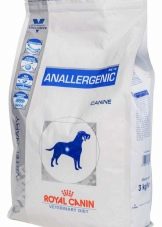
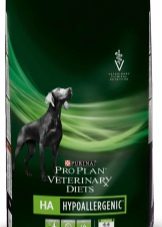
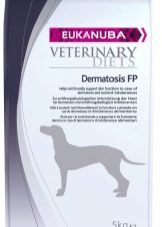
Premium preventative feeds include several types.
- Pro Plan Sensitive Skin for small dog breeds. Salmon with rice. Dehydrated fish protein is a source of triglycerides that help your pet's skin and coat be healthy. But nevertheless, corn and soybeans, which are part of the composition, theoretically can provoke an allergic reaction.
- Pronature Original 22. Lamb, corn and rice. Suitable for dogs who are allergic to chicken protein.
- Happy dog use rare types of protein - ostrich, horse meat, venison and so on. Not used in the manufacture of corn and soy. A wide variety of flavors and feeds makes it possible to exclude the protein that causes allergies and choose the right one.
- Brit Premium Sensitive. Lamb and rice. A rare type of protein in the amount of 30%, in the composition there is no corn, soy and other cereals. Chamomile has an antibacterial effect against opportunistic microflora. Most often used for sensitive intolerances and digestive disorders.
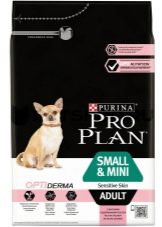
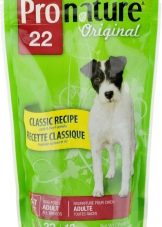


Super-premium preventive feeds are of higher quality.
- GO! Sensitive Food with oatmeal, salmon and apple. Supports the beauty and health of the coat. Suitable for dogs with sensitive digestion.
- Brit Care. Lamb meat 42% and rice 36%, chicken fat and salmon oil are rich in fatty acids, which has a beneficial effect on the quality of hair and skin.
- Bosch Sensitive. Lamb meat is the main component of the feed. And rice with potatoes as sources of carbohydrates. The composition also includes mussel flour, which is a source of macro- and microelements for the prevention of joint diseases. Omega-3s and 6s come from fish oil.
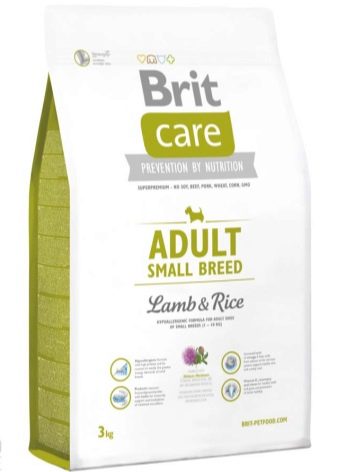
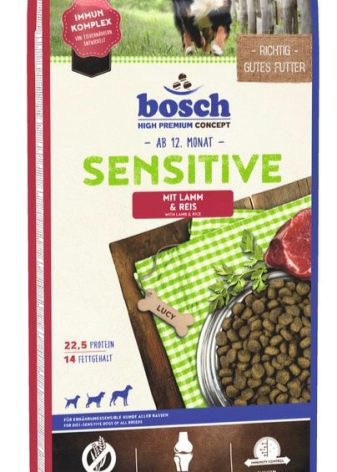
Holivics are top class feed.
- Acana Lamb, apple. Consists of natural ingredients, meat and offal of lamb. Omega-3s and 6s come not from fish, but from hypoallergenic algae. Apples and pumpkin help in the digestive tract, and carotene and pectin from them help normalize the functioning of the gastrointestinal tract. Herbs, such as chicory root, lemon balm, ginger and mint, inhibit the growth of bacteria that cause fermentation processes.

- 1st Choice Sensitive. Lamb, sea fish and brown rice provide basic nutrition without causing allergies, and ginger extract reduces gas formation in the intestines and activates digestion. And parsley and green tea have an antibacterial effect against pathogenic and putrefactive microflora.
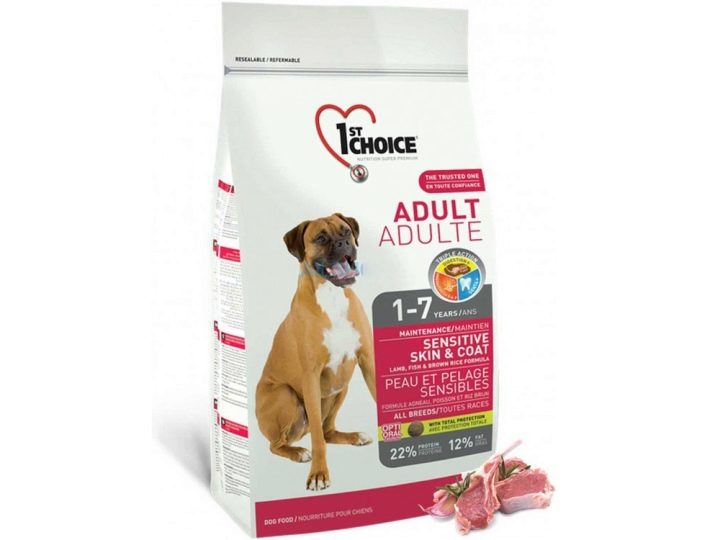
- Grandorf. Duck and potatoes. 60% duck meat and sweet potato. Antarctic krill is rich in fatty acids. The work of the digestive tract helps the fruits of ceratonia. Dried apples containing pectin and herbs reduce the likelihood of allergies. Natural preservatives, vitamin C and E, which helps repair damaged skin cells. The product is good in many ways, but it is rarely found on sale.
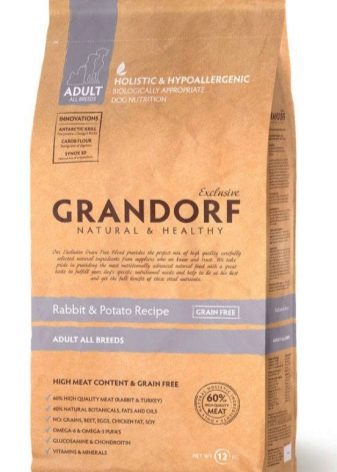

Hypoallergenic food specially for puppies of small breeds is produced by many manufacturers.
- Pro Plan with salmon and rice for puppies. Salmon flour, fish oil and antioxidants, in particular tocopherol, reduce the likelihood of allergies. The composition contains corn gluten. This food is not suitable for animals with gluten intolerance.
- ABBA holistic for puppies with a turkey. Mono-protein from fresh turkey meat in an amount of 55%. Carbohydrates from potatoes and peas. Prebiotics from chicory and carob.
- Monge. Lamb and potato yams. Lamb meat is used as a single protein, and salmon oil and salmon flour provide healthy and shiny skin and coat. Not suitable for cereal sensitive pets.
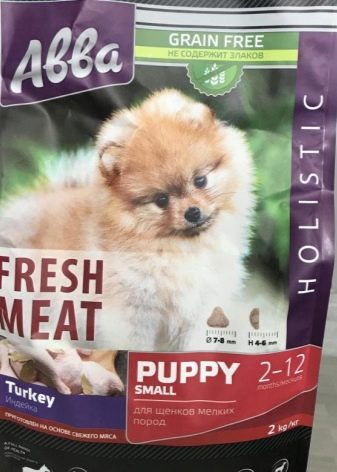
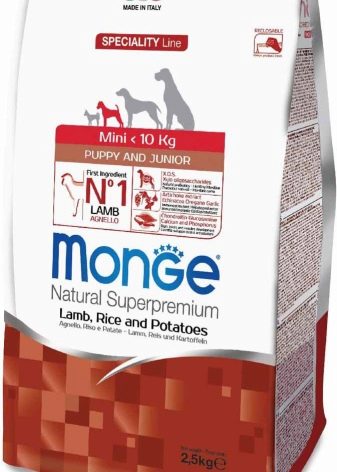
Feed manufacturers in the Sensitive series often produce universal All breeds rations (for all breeds), and some of the manufacturers, for example, Brit Premium Sensitive, are suitable for all breeds and for all ages, as indicated in the instructions for use.
The above is a list of the most famous manufacturers, and in fact this list is larger.
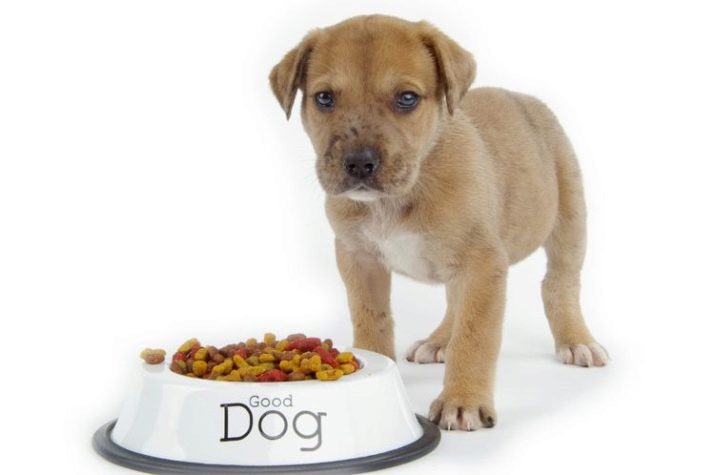
How to choose?
All hypoallergenic foods, medical and preventive, undergo a lot of research before getting into a bowl with a pet. Unfortunately, it is impossible to produce food free of possible allergens, since an allergic reaction can be to any ingredient in the food.
You can feed your pet a hypoallergenic food and on an ongoing basis. Therefore, selecting food, exclude the cause of allergies, paying attention to the composition of the food. For example, for a dog with an allergy to chicken, they pick up food on a lamb, duck, turkey, or, in response to gluten, pick up grain-free feeds - without corn, wheat and barley.
Veterinarians advise you to periodically change the feed so as not to cause a reaction to new allergens. Based on the list above, or by going to a nearby pet store, you can choose the right food on a candy bar and without artificial components. Selection of food is a responsible matter, a dog can be confused by a new taste or a new form of granules. Therefore, you must first purchase a pack of small volume - suddenly the food will not like or will not fit. It’s better to start with feeds from popular manufacturers who do a lot of research before being put on sale.
When choosing food, you also need to consider the age of the animal, the characteristics of the breed, physiological and individual characteristics. Be sure to study the composition of the feed, and pay attention to the expiration date.
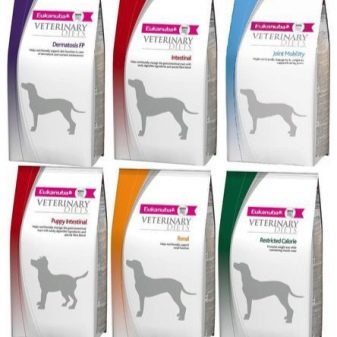

Grandorf dry feed review for small dog breeds can be found in the next video.








































